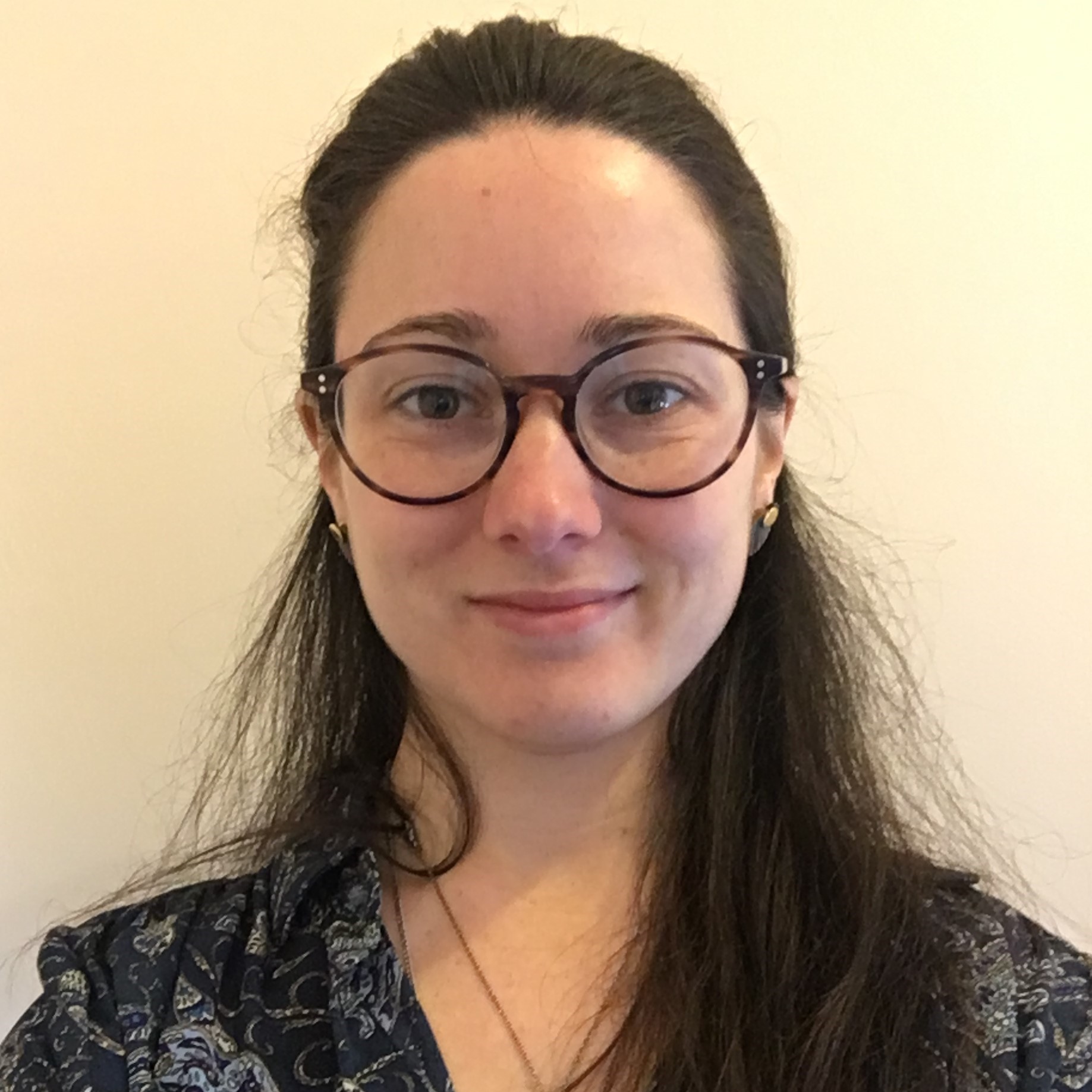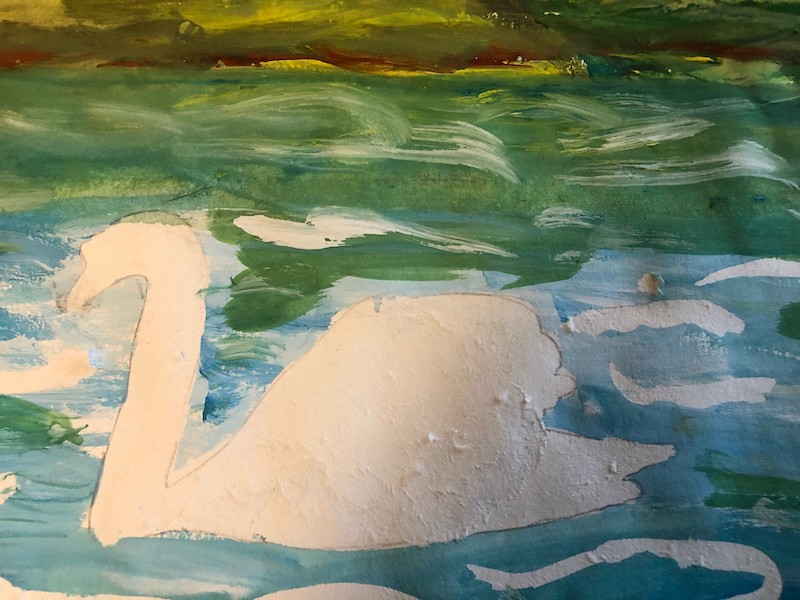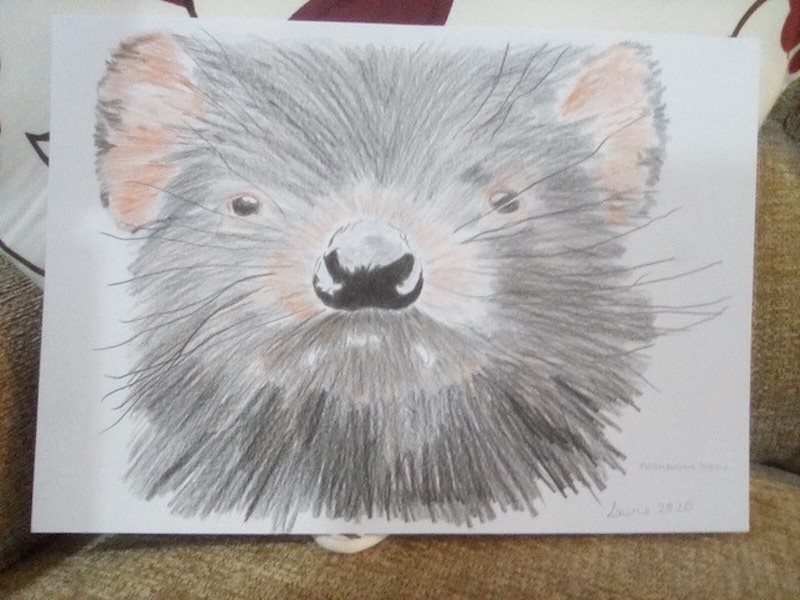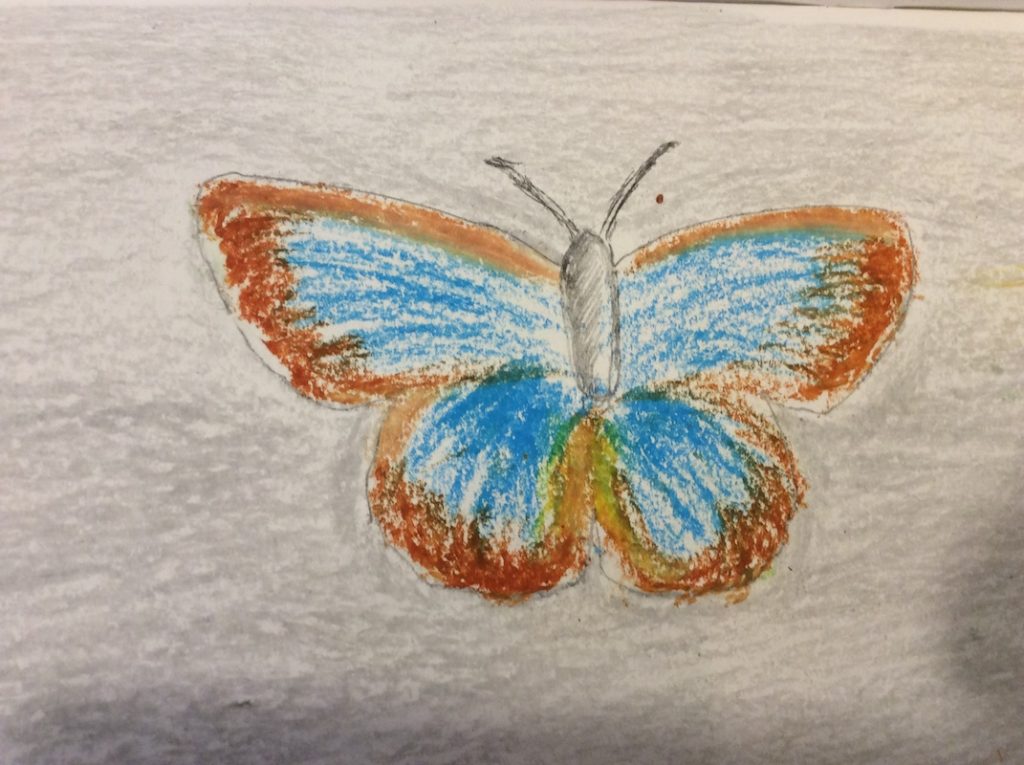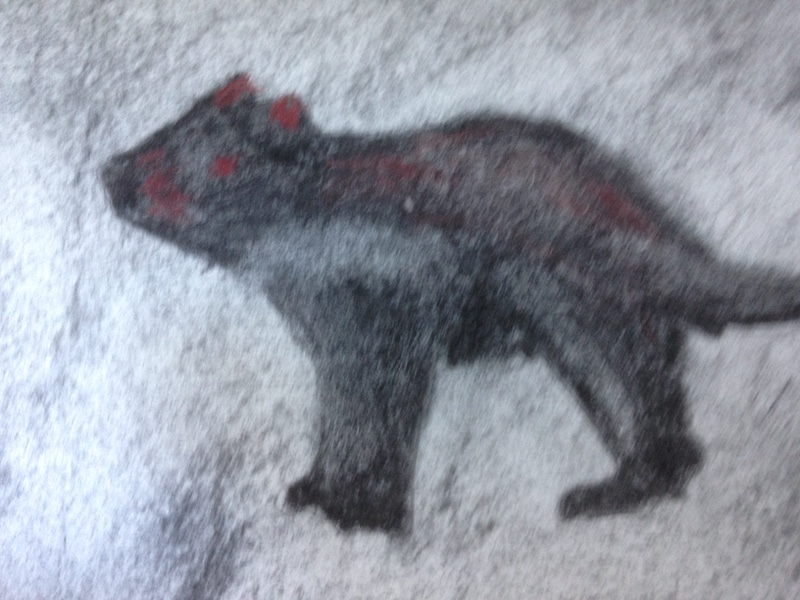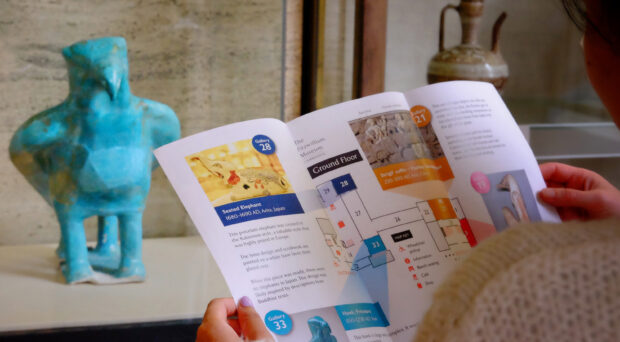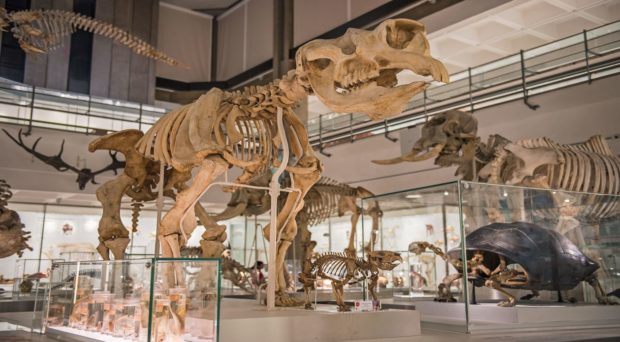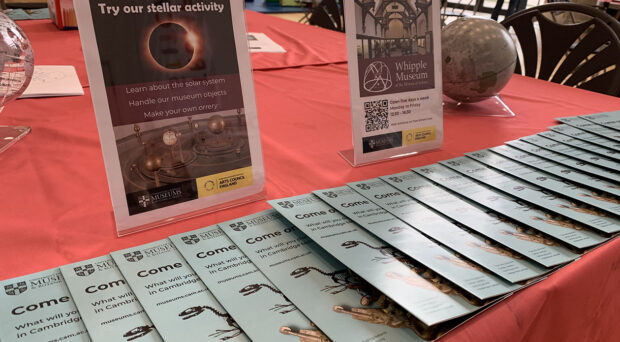Sara Steele, Museum of Zoology Learning Assistant, shares her experience of developing and delivering a remote 4-week course designed to engage the University of Cambridge Museum’s Portals to the World participants; people with a dementia diagnosis or cognitive impairment and their care partners.
In its tenth year, Portals is a partnership programme delivered with Dementia Compass and combines regular courses with an Alumni programme. The regularity promotes familiarity, confidence and trust in the Museums. Each session comprises of a talk, gallery exploration and a creative or object handling activity. Portals emphasizes ability over disability and provides opportunities for people to learn, share and create and to experience ‘respite together’.

Why go ahead with plan B, a virtual course?
On one hand, it seemed a shame for all of the work that went into the cancelled six-week spring 2020 course to go to waste. On the other hand, by July we were beginning to better understand how long the impact of the pandemic was going to last, especially for this more vulnerable and isolated cohort. Using the learning gained from virtual sessions held over the summer period for the Portals Alumni group and with “plan B” set into motion we began to look at the possibilities ahead, rather than the lost opportunities behind.
This decision didn’t come without the need for adjustments. For example, while all six of the initial speakers were still enthusiastic to take part, hosting fewer sessions than initially planned allowed for the wiggle-room greatly need in the flux of the pandemic.
We were also aware that this was the first virtual course we had held for this audience and so wanted to get it as ‘right’ as possible. Planning for fewer weeks enabled us to allocate more energy and time to each session.
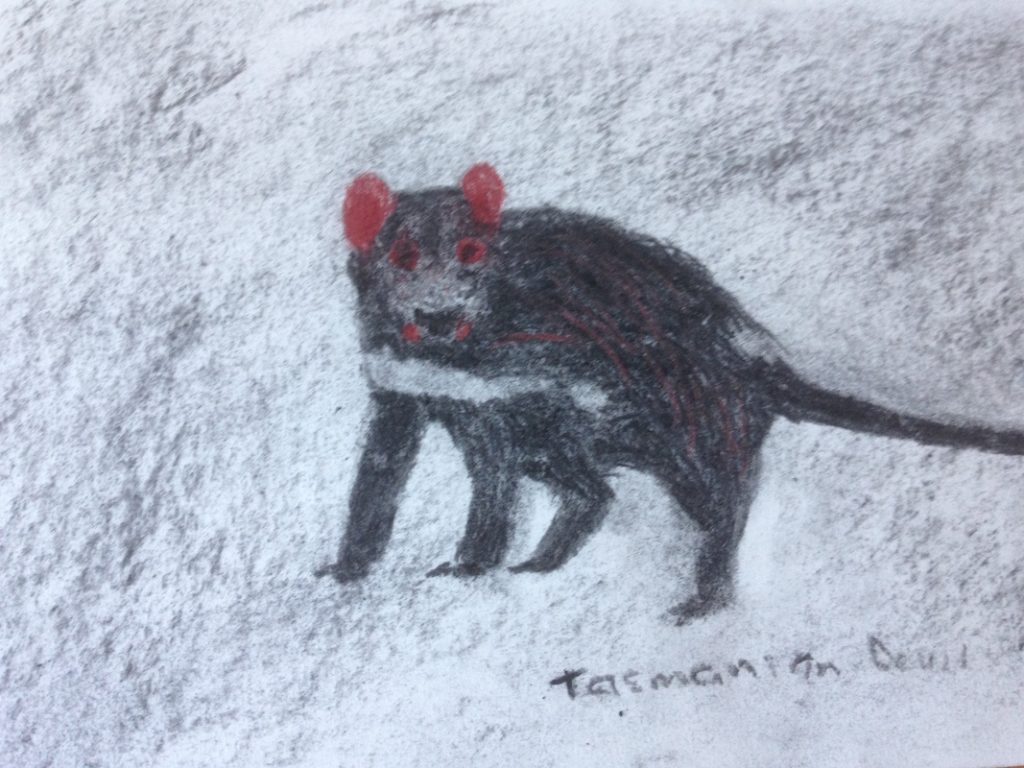
How did you adapt the talks for an online environment?
Luckily, the bank of resources and draft documents that we built for the 2019 course at the Museum of Zoology had been created with adaptation in mind, as it is likely that speakers would change with each course. To ensure consistency, quality, accessibility, and accuracy, I create these in conversation with each speaker.
Nevertheless, to replicate the interactivity of our in-person course, the style of the talks had to change. What emerged were a series of 10-15 minute recorded interviews, where the content is presented in a question and answer format.
There are several benefits to this approach:
- Pre-recording the difficult bits helps to avoid tech issues on the day
- Enables re-takes and real-time guidance for speakers
- Aids in keeping the content short and to the point
- Most interviews were able to take place in the Museum spaces, with the collection
- Recording over Zoom gave flexibility for speakers unable to travel to the Museum
- Introduces a conversational atmosphere from the start, resulting in more engagement from the audience
- Provides a resource that can be shared, revisited, used later and elsewhere
How did you recreate the interactive element of the sessions?
Following the talk, we aim for two goals in our face-to-face sessions, interactivity and conversation. I planned to include them both in our virtual offer. First, the object handling or ‘closer look’ became a ‘show and tell’ style, informal, live, continuation of the recorded talk, with the audience welcome to ask questions or share insights throughout. This helped to recreate the same conversational and friendly atmosphere found in the museum.
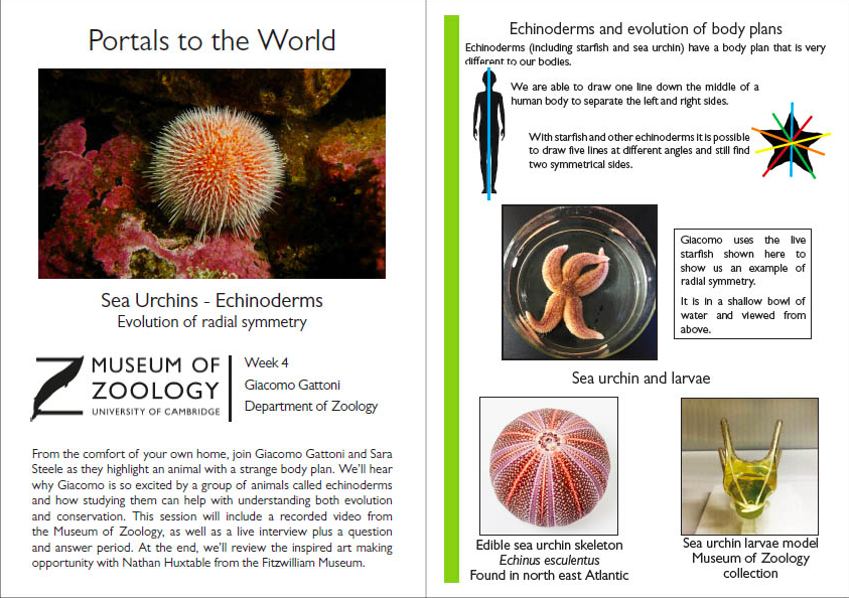
Importantly, the images and information shown here were also included in the handout resource; this helps to not exclude those unable to interact with the screen.
We have conversation, now we need interactivity. To recreate the hands on element of our usual sessions, we opted to offer an art activity, devised in response to each session’s conservation story. The activity would allow pairs to make together at home and continue their discussion about and engagement with the sessions. To mimic the process of sketchbook working, the activities were based around the development of art techniques and the exploration of shape and form.
Nathan Huxtable talks to us about how he created the set of art-making demonstration videos:
What were you hoping to achieve with the video demonstrations?
Nathan:
We wanted to demonstrate the activity but also to be a familiar and friendly face. We hoped that sharing my studio space, the shed, would be a fun and unusual experience that wouldn’t have happened without Lockdown. Thinking about using the difficult circumstances as an opportunity to share things in a new way, not replicating how we do things at the Museum.
Do you have any tips for others hoping to create video activities?
Nathan:
I think a good camera and internet connection were vital to this project. My iPhone has been brilliant as a filming tool for me. I think you really have to play with the technology to learn it. I have always wanted to make films but have never found the time to master it. Learning how to use the free iMovie app on my phone has been liberating and I use it now in my own practice too. I always give myself time and try to remember if I was a professional filmmaker how long these things would take. Watching other short films online is also helpful.
As well as encouraging participants to experiment with new materials, the videos attempt to reach beyond the sessions and create dialogue between all involved. Some participants opted to use their sketchbooks as a journal:
“Our art has not always been as instructed, but never the less, creative. Fun is important isn’t it! We cut out some bits from the information sheets added some stencil outlines for interest and may well put in some poems / rhymes/ descriptions. We don’t want to waste the remaining pages.” 2020 course participant
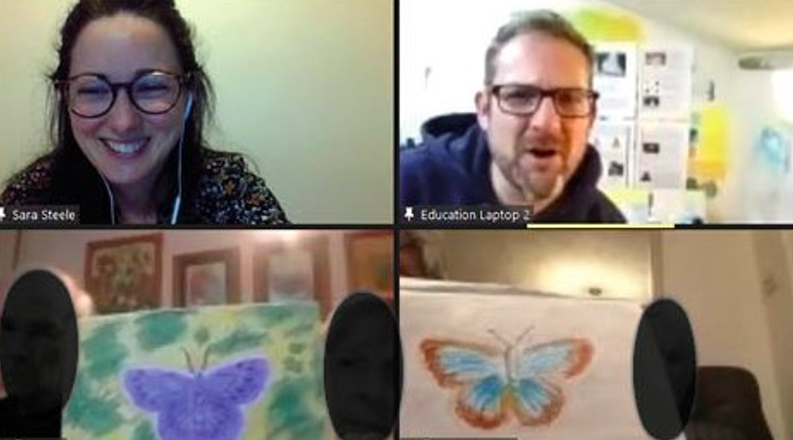
Nathan comments:
Having looked at all the work it’s really fantastic and humbling to see what people have achieved. The results reassured me that the activities weren’t too prescriptive, allowing people to put their own personality into it. So delighted that so many people felt able to do the art activities and really hope wherever they keep their work friends and family can see it.
Can’t wait to see what other workshops we can come up with until finally being able to meet in person!
Back to Sara and the Museum of Zoology:
How do you select your speakers?
We are very fortunate at the Museum of Zoology to have an active relationship with the Department and its many researchers and students. We strive to offer the Museum’s many engagement opportunities to as wide a community as possible, often by sending a ‘call out’ for contributions. What we receive is a higher diversity of people interested.
Edye Hoffman from Dementia Compass notes: “I really enjoyed the diversity of them and I think it is a strength of your Museum’s course. Was that on purpose? Because that was a really interesting approach, not only in their interests but visually, internationally, and where they were in their professional journeys.”
Why should researchers sign up to contribute to Portals?
In addition to the expert training that all speakers receive, it is well-known that contributing to the happiness or wellbeing of others can in-turn boost your own wellbeing. Evaluation undertaken of this most recent course has also shown that presenting research to alternative adult audiences raises the bar on how they communicate the work:
“It has been an enriching experience… and made me think about aspects of the research that might be more or less interesting to the public. The questions they gave were interesting and insightful.” 2020 course speaker
“ You get some fantastic questions and stories, and in some moments, I forgot that I wasn’t at a conference or more academic settings.” 2020 course speaker
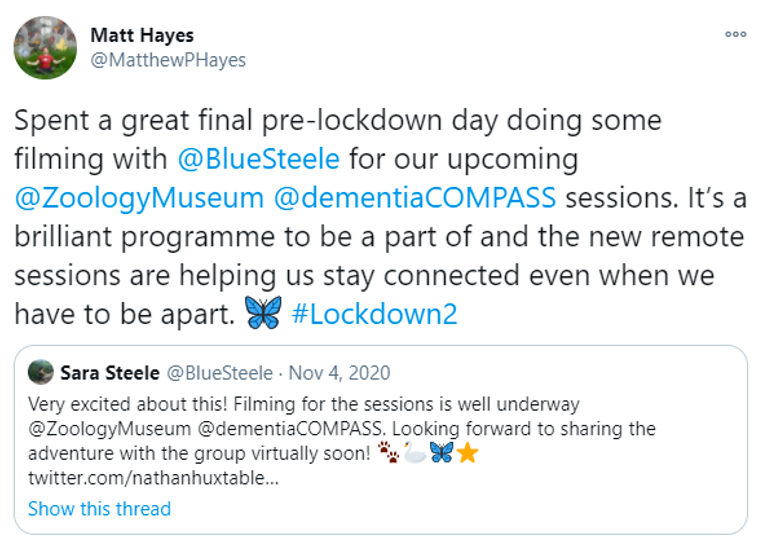
After all the preparation, how did it go?
Our audience, members of the Portals to the World alumni group, are the first to receive an online course like this one; willing participants as we navigate the new world of connecting virtually. While the summer sessions helped us to understand what worked short-term, this course enabled us to see some of the longer-term impact that we witness in our in-person courses.
Namely, that creating a weekly routine helps us to build on the relationship to the material, to the ‘space’ and to each other. I found the use of word clouds useful when looking at the plethora of qualitative feedback given by participants throughout the course:
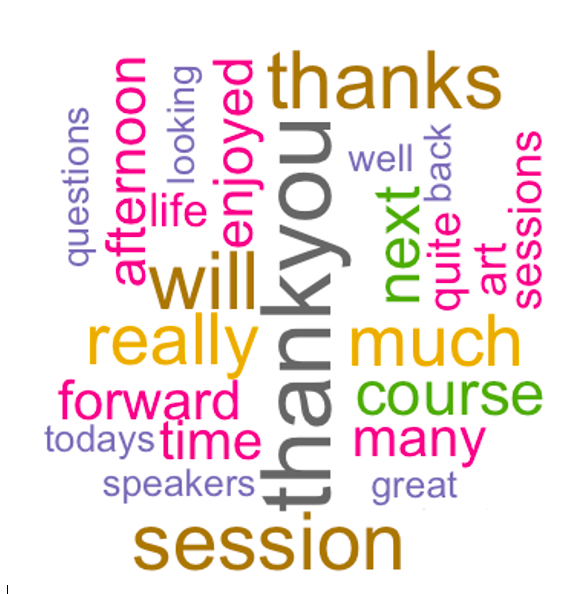
While creating opportunities to interact socially with others boosts wellbeing and motivation, for me, the most significant word here is ‘forward’. Looking ahead and looking forward has been a struggle for everyone during this time. If the programmes we produce can provide this, even in a small way, then the effort is more than worthwhile.
All resources are publically accessible on the Museum of Zoology blog.

